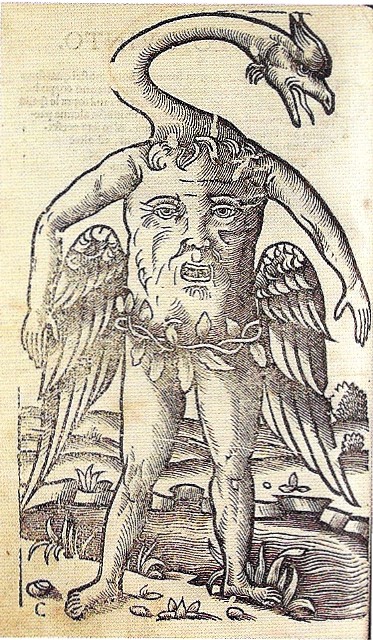The Great South Land from Hordern House
- by Michael Stillman

The Great South Land from Hordern House
Item 42 is one of the other great travelogues of the days before printing, that of Sir John Mandeville. Mandeville was supposedly an English knight who set out for the east in the mid-14th century. His account was enormously popular, first in manuscript (some 300 survive) and then as printed books. This is a late 15th century Italian printing, one of seven incunable editions in Italian. As for Mandeville, his existence, particularly under that name, is highly debatable. He likely was someone else, who perhaps visited the Near East, and borrowed from others' travels to the more outer reaches of Asia. Nonetheless, he was an inspiration to the Age of Discovery, and his claim that one could circumnavigate the globe may have encouraged Columbus to try to reach the East by heading west. AU $165,000 (US $170,857).
What kind of creatures lived in the far off southern lands no one had ever visited? Imaginations ran wild in the days before explorers reached the world's outer reaches. Item 50 is Le Relationi Universali… by Giovanni Botero, a book published in 1618, but using many woodblocks that evidently had been sitting around for a very long time, well back into the previous century. It combines drawings of natives seen in far off parts of Asia with creatures strictly formed in someone's imagination, without much distinction between the real and imaginary. As the image on this page attests, some of these creatures are very strange, even for Australia! AU $32,500 (US $33,658).
Item 103 is one of the Memorials of Pedro Fernandez de Quiros, beginning Despuis que puse en practica… published August 1608. Quiros undertook a pair of Pacific journeys on behalf of Spain in the early 17th century. On the second, he thought he hit paydirt - the tip of the vast southern continent. He claimed it on behalf of Spain, and returned home. He next sought funding from the crown for an additional expedition to reach the heart of the great continent. He named the land "Austrialia del Espiritu Santo." Naturally, Quiros did not find the nonexistent great southern continent, nor did he even find Australia. He discovered one of the larger islands of the New Hebrides chain. Nonetheless, he believed, and spent the rest of his life writing these Memorials to the Spanish government, attempting to convince them of why they should fund another expedition. Spain repeatedly declined. Still, Quiros' discovery would inspire others to search the far corners of the Pacific, and while not finding a massive southern continent, they did find a small one - Australia. Copies of Quiros' Memorials are exceedingly rare. Price on request.